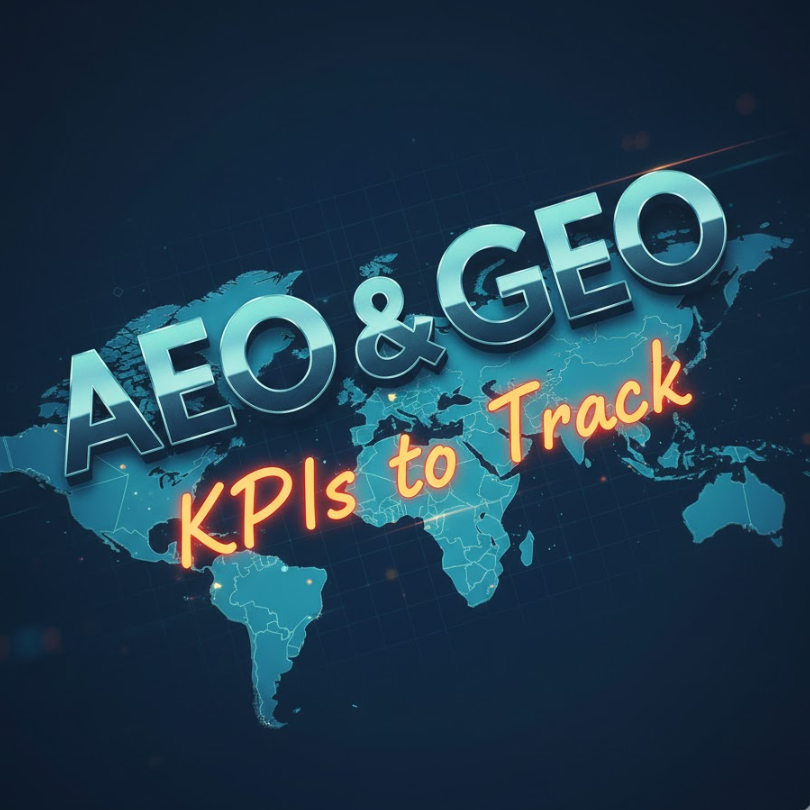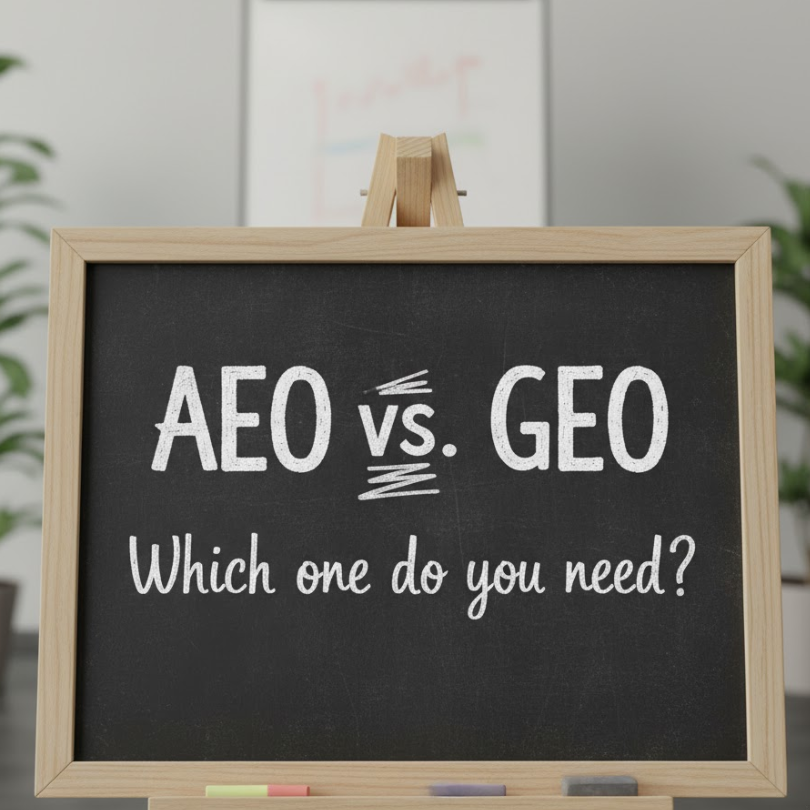
What KPIs Should You Track After Starting a GEO or AEO Campaign?
The success of Answer Engine Optimization (AEO) and Generative Engine Optimization (GEO) isn’t measured by old SEO metrics like clicks or backlinks — it’s measured by visibility within AI ecosystems.
Once your campaign begins, you need to track how often your brand appears, gets cited, and gets chosen by Google SGE, Bing Copilot, ChatGPT, and other AI-powered discovery engines.
This guide explains the new KPIs that matter in 2025 — so you can measure performance in a world where users get answers without ever visiting a website.
Why Traditional SEO Metrics No Longer Tell the Full Story
SEO used to be about rankings, impressions, and CTRs.
But in the age of zero-click search and AI summaries, visibility isn’t about position — it’s about presence.
That means your KPIs should track:
How well AI systems understand your brand
How often your data appears in generative results
How trusted your content becomes in the AI ecosystem
💡 In 2025, “ranking” is replaced by “referencing.” GEO and AEO measure recognition, not clicks.
H2: 1. AI Citation Frequency
Definition:
How often your brand, content, or entity is cited by AI systems in SGE results, Bing Copilot summaries, or ChatGPT responses.
Why It Matters:
Citation frequency shows that AI models trust your structured data as a reliable source — a key indicator of AI comprehension and entity authority.
How to Measure It:
Use AI visibility trackers, GEO dashboards, or manual SGE monitoring to log mentions, summaries, and brand appearances.
📈 Brands with strong structured data see 2–5x more AI mentions within 90 days.
2. Generative Impression Share (GIS)
Definition:
The percentage of AI-generated answers that include your brand or website as a cited source within your niche.
Why It Matters:
GIS is the new “market share of visibility” — showing how often your business dominates generative discussions within its vertical.
How to Measure It:
AI-driven analytics platforms like SGE visibility tools or custom GEO dashboards can estimate impression share across multiple AI platforms.
💬 Higher GIS = more brand recall across zero-click discovery.
3. Structured Data Accuracy (SDA)
Definition:
The percentage of your website’s pages that contain valid, properly nested schema markup and entity relationships recognized by AI crawlers.
Why It Matters:
Without precise data structure, even the best content won’t be understood by AI engines. SDA ensures your content is machine-readable, contextually accurate, and trustworthy.
How to Measure It:
Use Google’s Rich Results Test, Schema.org validators, or AI Schema Audits inside your GEO platform.
🧩 SDA above 95% correlates strongly with faster inclusion in SGE and Bing summaries.
4. Answer Visibility Rate (AVR)
Definition:
How frequently your content is selected as the direct answer in People Also Ask boxes, featured snippets, or AI summaries.
Why It Matters:
AVR reveals how well your AEO strategy positions your content as “the answer.” It’s a measure of authority and clarity.
How to Measure It:
Track through Google Search Console → Performance → Search Appearance for snippets, or use tools like AnswerThePublic combined with AI answer monitoring tools.
🎯 Aim for an AVR growth of 25–50% in the first 90 days.
5. Entity Recognition Growth (ERG)
Definition:
The increase in how often your brand, services, or products appear as recognized entities in AI systems’ knowledge graphs.
Why It Matters:
ERG proves your brand is becoming a known entity — not just a website — in AI ecosystems. It strengthens generative visibility and cross-platform consistency.
How to Measure It:
Use Google’s Knowledge Graph API, Brand Entity Checker, or Eagles Media’s AI Recognition Reports to monitor inclusion frequency.
🔗 When your brand becomes an entity, AI stops guessing — it starts citing.
6. Generative Conversion Impact (GCI)
Definition:
The measurable influence of AI visibility on leads, inquiries, or sales conversions.
Why It Matters:
Generative visibility must drive real business outcomes — not just impressions. Tracking GCI connects AI citations to conversion attribution, proving ROI.
How to Measure It:
Use multi-touch attribution modeling with UTM tracking + generative analytics integrations.
💰 Clients typically see a 15–30% lift in inbound leads from improved AI presence.
Bonus KPI — Brand Mention Velocity (BMV)
Definition:
The rate at which new AI systems begin recognizing, citing, or reusing your brand’s structured data.
Why It Matters:
High BMV means your optimization is scaling. AI systems are continually retraining with your verified data — creating exponential recall growth.
How to Measure It:
Compare month-over-month AI citations and SGE inclusions to identify velocity trends.
How Eagles Media Tracks These KPIs
At Eagles Media Enterprises, every GEO and AEO campaign includes:
Custom AI Visibility Dashboards for citation and impression tracking
Structured Data Health Reports for schema compliance
Generative Performance Analytics showing growth across SGE, Bing, and ChatGPT
Quarterly Visibility Audits mapping AI comprehension patterns
🚀 We measure what matters — AI recognition, not just web clicks.
Key Takeaway
Success in GEO and AEO isn’t about who ranks first — it’s about who’s referenced most.
Tracking the right KPIs ensures you’re not just publishing content, but training AI to trust your brand.
From AI citation frequency to entity growth, the new analytics framework is about visibility beyond search results.
If you’re not measuring these, you’re optimizing for a world that no longer exists.





